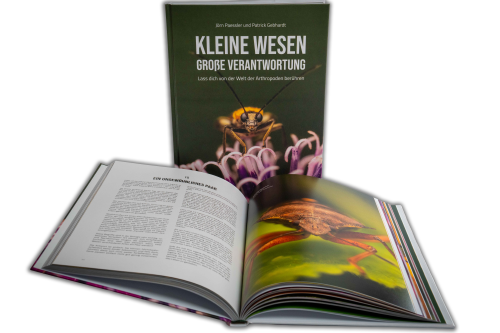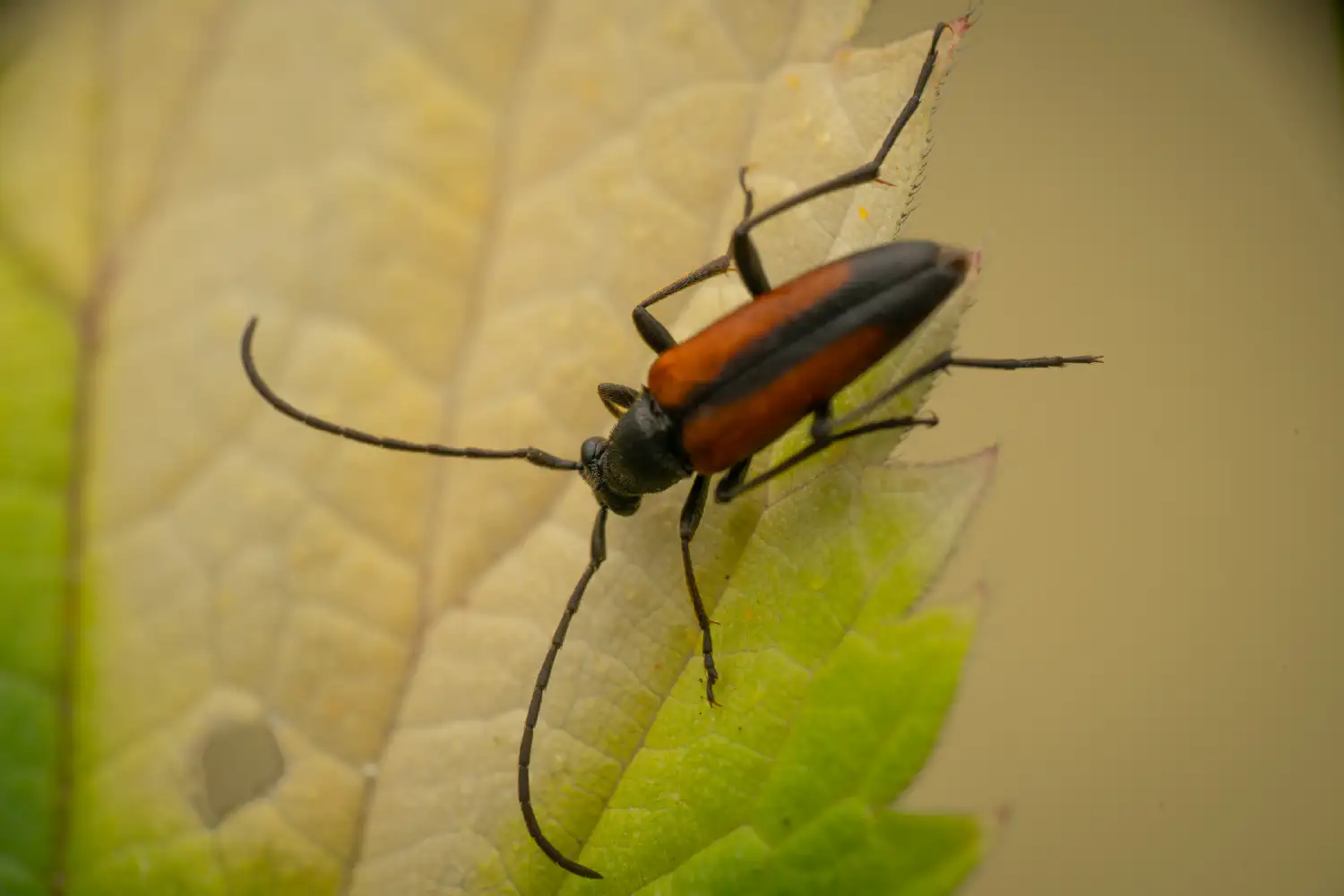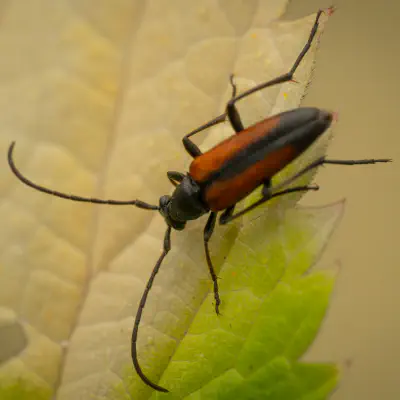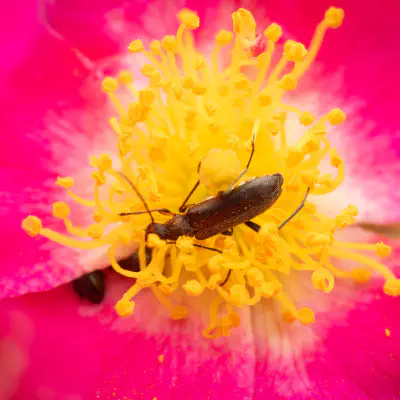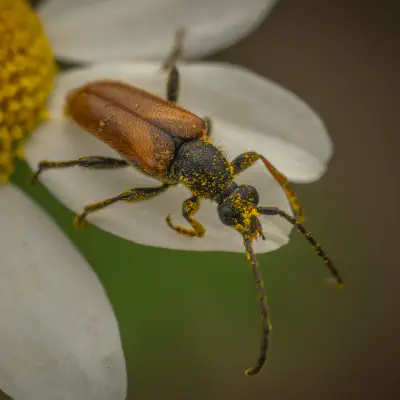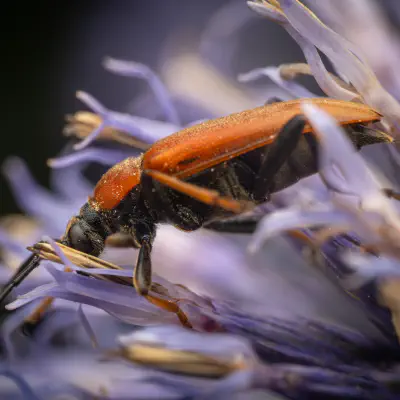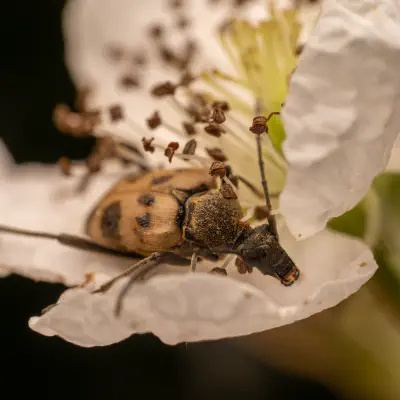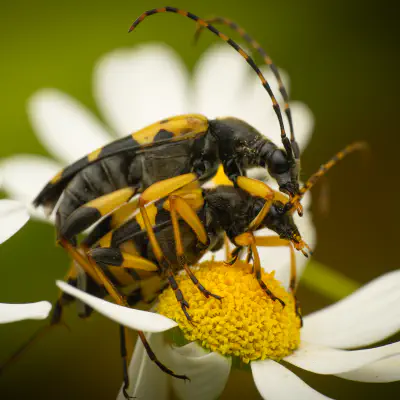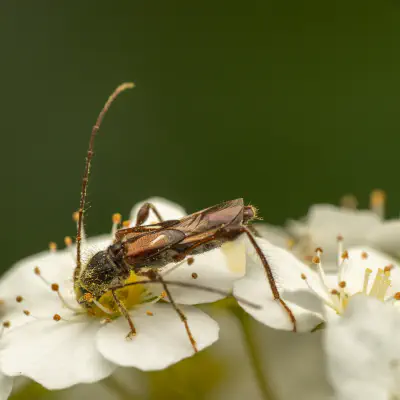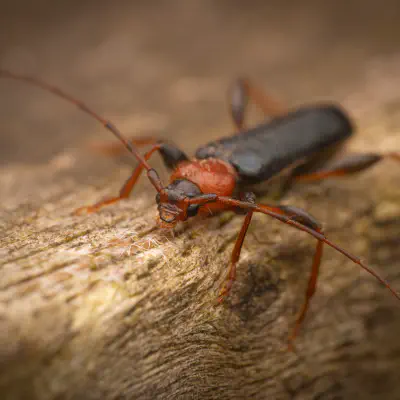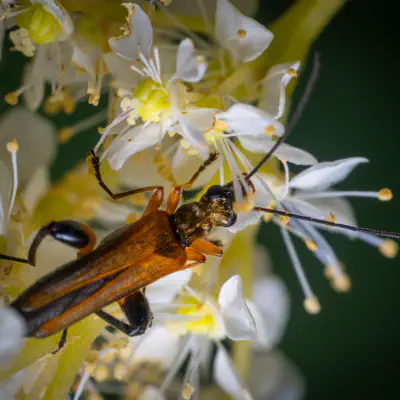Longhorn Beetles Lat. “Cerambycidae“
Hierarchy
Ancestry Graph
%%{
init: {
'theme': 'base',
'themeVariables': {
'primaryColor': '#83a09c',
'primaryTextColor': '#212d2b',
'primaryBorderColor': '#fff',
'lineColor': '#fff',
'secondaryColor': '#006100',
'tertiaryColor': '#fff'
}
}
}%%
flowchart LR
classDef active fill:#fff
arthropods("phylum: Arthropods"):::active
arthropods-->insects("class: Insects"):::active
insects-->beetles("order: Beetles"):::active
beetles-.->ant-like-flower-beetles("family: Ant-like Flower Beetles")
beetles-.->checkered-beetles("family: Checkered Beetles")
beetles-.->click-beetles("family: Click Beetles")
beetles-.->darkling-beetles("family: Darkling Beetles")
beetles-.->false-blister-beetles("family: False Blister Beetles")
beetles-.->false-flower-beetles("family: False Flower Beetles")
beetles-.->fruitworm-beetles("family: Fruitworm Beetles")
beetles-.->ground-beetles("family: Ground Beetles")
beetles-.->jewel-beetles("family: Jewel Beetles")
beetles-.->lady-beetles("family: Lady Beetles")
beetles-.->leaf-beetles("family: Leaf Beetles")
beetles==>longhorn-beetles("family: Longhorn Beetles"):::active
beetles-.->net-winged-beetles("family: Net-winged Beetles")
beetles-.->sap-feeding-beetles("family: Sap-feeding Beetles")
beetles-.->scarabs("family: Scarabs")
beetles-.->shining-flower-beetles("family: Shining Flower Beetles")
beetles-.->skin-beetles("family: Skin Beetles")
beetles-.->soft-winged-flower-beetles("family: Soft-winged Flower Beetles")
beetles-.->soldier-beetles("family: Soldier Beetles")
beetles-.->straight-snouted-weevils("family: Straight-snouted Weevils")
beetles-.->true-weevils("family: True Weevils")
click ant-like-flower-beetles href "/en/catalogue/arthropods/insects/beetles/ant-like-flower-beetles/"
click checkered-beetles href "/en/catalogue/arthropods/insects/beetles/checkered-beetles/"
click click-beetles href "/en/catalogue/arthropods/insects/beetles/click-beetles/"
click darkling-beetles href "/en/catalogue/arthropods/insects/beetles/darkling-beetles/"
click false-blister-beetles href "/en/catalogue/arthropods/insects/beetles/false-blister-beetles/"
click false-flower-beetles href "/en/catalogue/arthropods/insects/beetles/false-flower-beetles/"
click fruitworm-beetles href "/en/catalogue/arthropods/insects/beetles/fruitworm-beetles/"
click ground-beetles href "/en/catalogue/arthropods/insects/beetles/ground-beetles/"
click jewel-beetles href "/en/catalogue/arthropods/insects/beetles/jewel-beetles/"
click lady-beetles href "/en/catalogue/arthropods/insects/beetles/lady-beetles/"
click leaf-beetles href "/en/catalogue/arthropods/insects/beetles/leaf-beetles/"
click longhorn-beetles href "/en/catalogue/arthropods/insects/beetles/longhorn-beetles/"
click net-winged-beetles href "/en/catalogue/arthropods/insects/beetles/net-winged-beetles/"
click sap-feeding-beetles href "/en/catalogue/arthropods/insects/beetles/sap-feeding-beetles/"
click scarabs href "/en/catalogue/arthropods/insects/beetles/scarabs/"
click shining-flower-beetles href "/en/catalogue/arthropods/insects/beetles/shining-flower-beetles/"
click skin-beetles href "/en/catalogue/arthropods/insects/beetles/skin-beetles/"
click soft-winged-flower-beetles href "/en/catalogue/arthropods/insects/beetles/soft-winged-flower-beetles/"
click soldier-beetles href "/en/catalogue/arthropods/insects/beetles/soldier-beetles/"
click straight-snouted-weevils href "/en/catalogue/arthropods/insects/beetles/straight-snouted-weevils/"
click true-weevils href "/en/catalogue/arthropods/insects/beetles/true-weevils/"
click arthropods href "/en/catalogue/arthropods/"
click insects href "/en/catalogue/arthropods/insects/"
click beetles href "/en/catalogue/arthropods/insects/beetles/"
Further Information
„Longhorn Beetles“ on wikipedia.org
„Longhorn Beetles“ on iNaturalist.org
Copyright

This article uses material from the Wikipedia article Cerambycidae the free encyclopedia Wikipedia which is released under Creative Commons Attribution-ShareAlike 4.0 International License). On Wikipedia a list of authors is available.

Little beings in print
Order our calendars and books today!
Compiled with love. Printed sustainably. Experience our little beings even more vividly in print. All our publications are available for a small donation.
